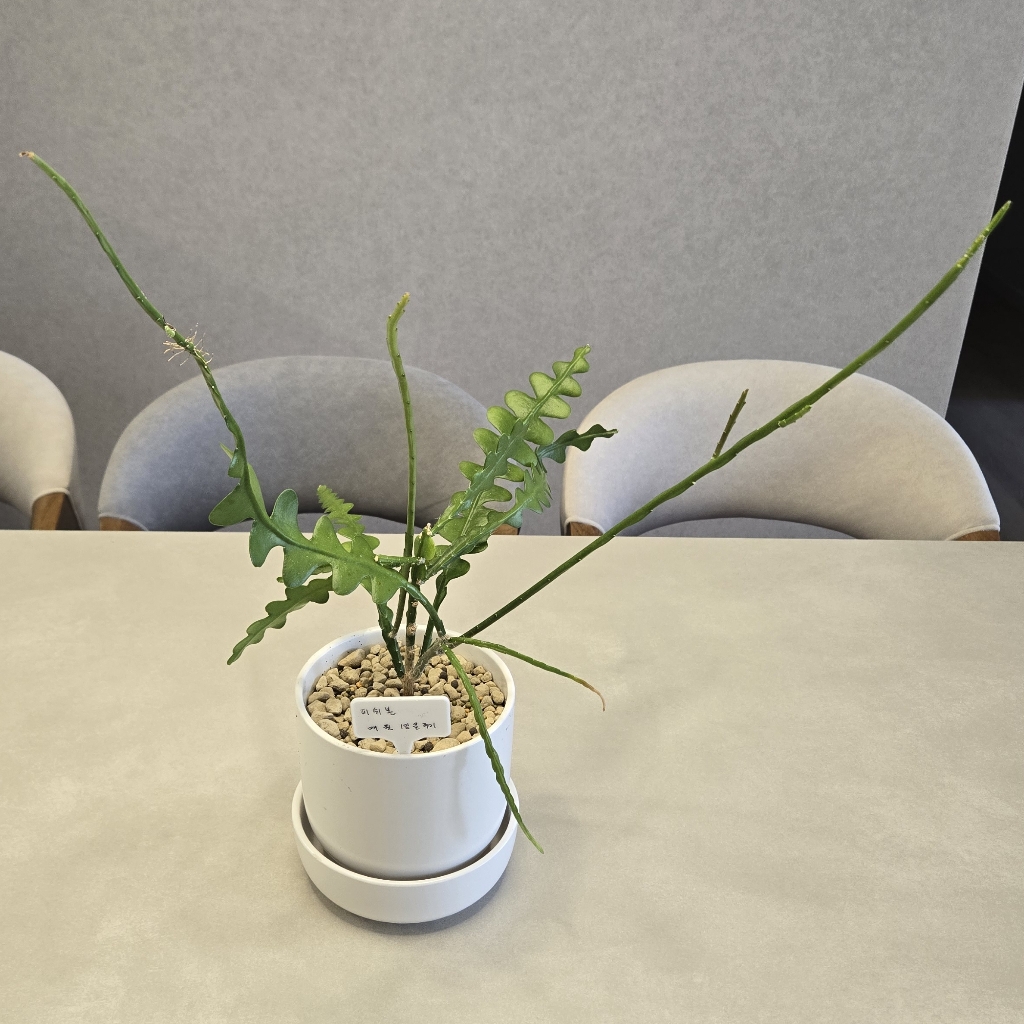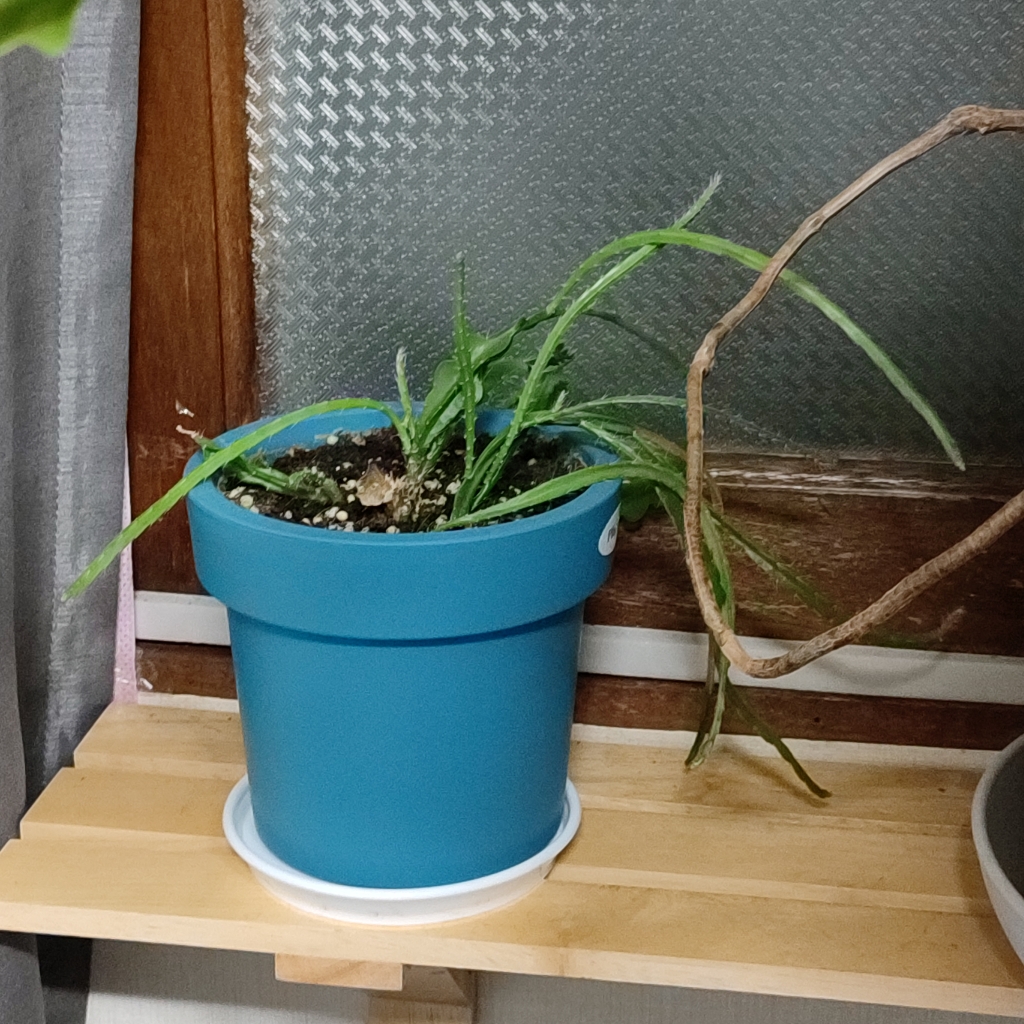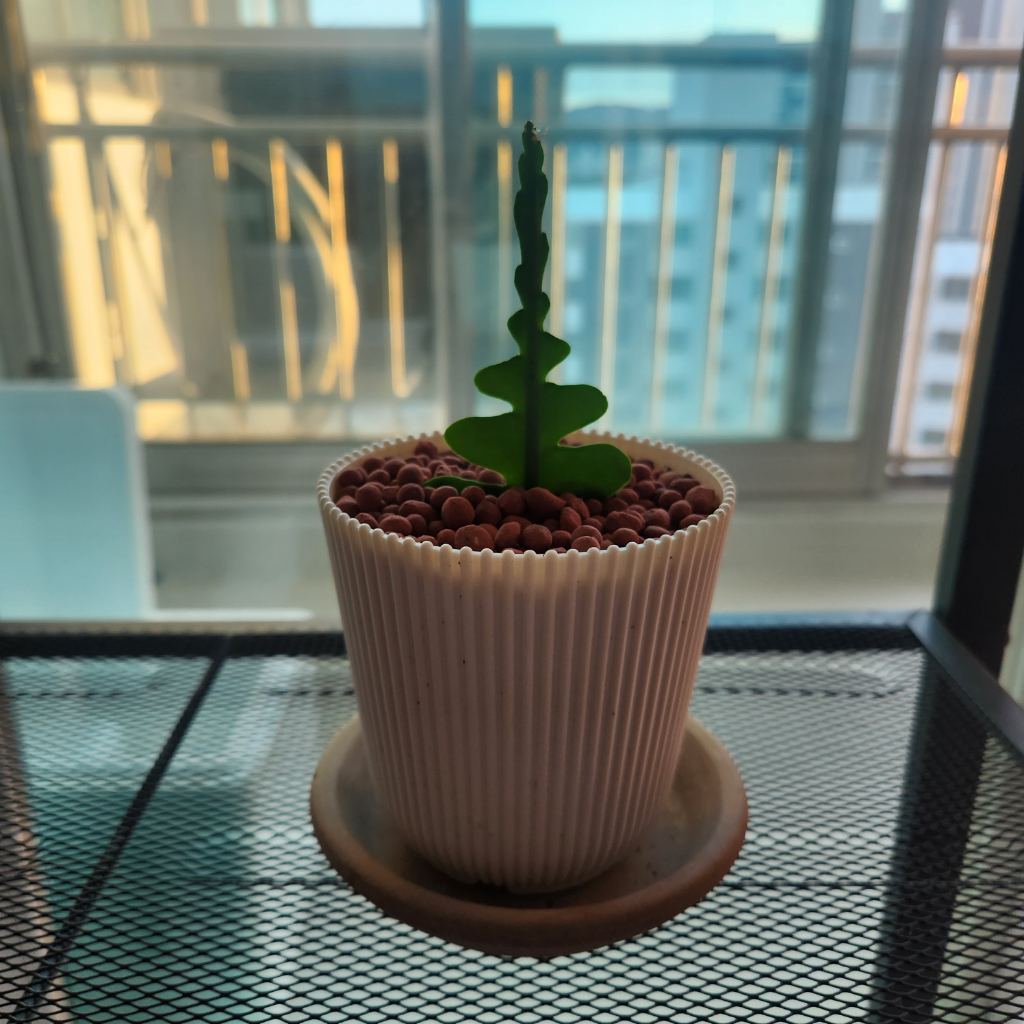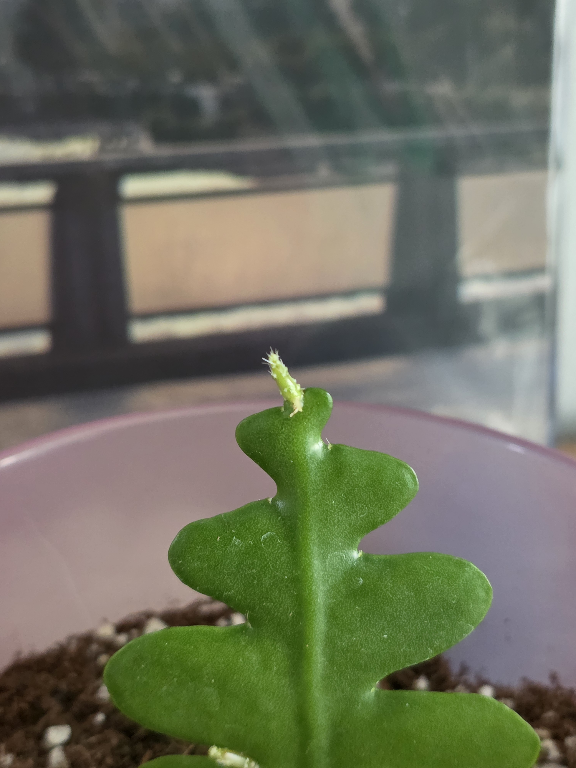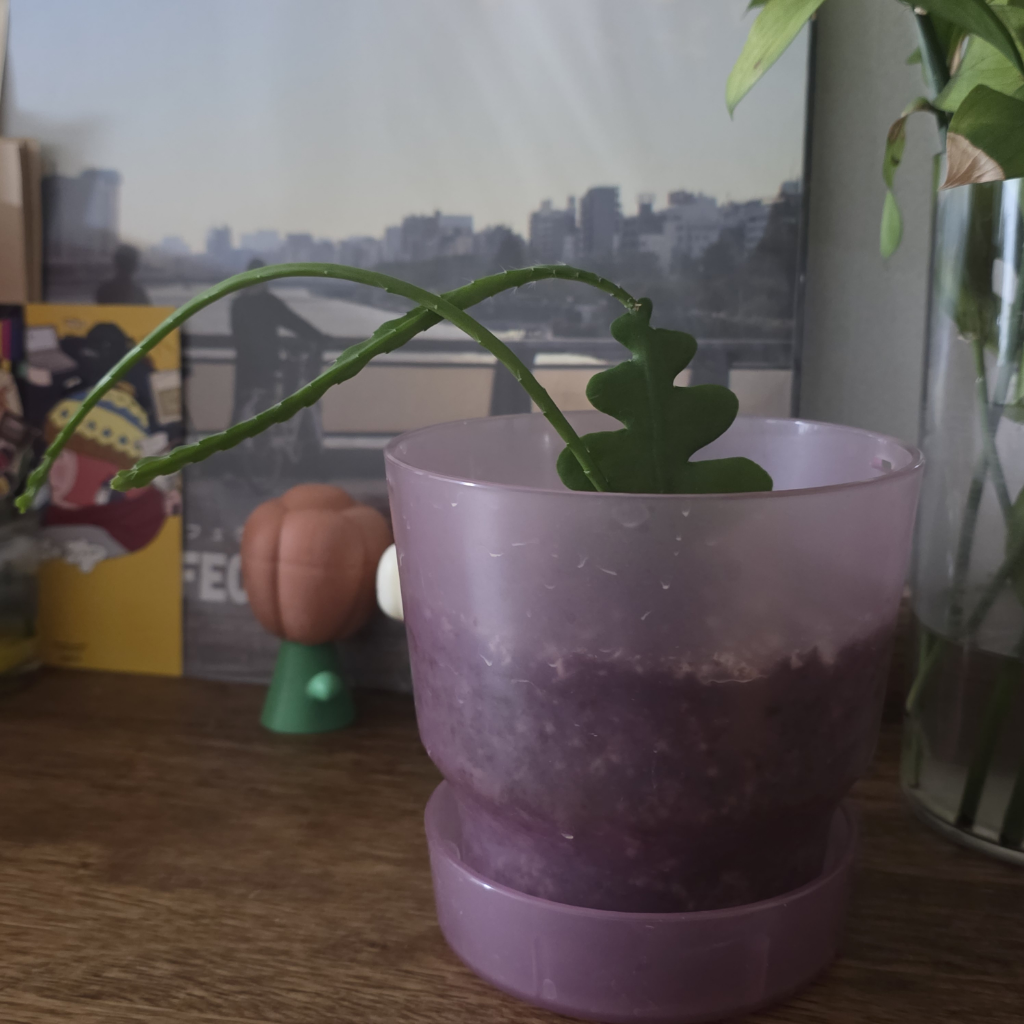How to grow and care for Selenicereus anthonyanus
plant care guide about watering, fertilizing, trimming, repotting, cutting, propagating Selenicereus anthonyanus, Zig-zag cactus, Orchid cactus
Selenicereus anthonyanus 101 - Plant Care Instructions
Bright indirect light
15C° ~30C°
Every 14 days
Growth Observation wiki
💬 Gardener's know-how
Botany Encyclopedia
Family : Cactaceae
👀 Characteristics details
Most of them have spines, which minimize water loss. As a result, overwatering can easily lead to their death.
🌿 Photosynthesis
Most plants in this family use CAM (Crassulacean Acid Metabolism) photosynthesis, typical of desert plants. This means they close their stomata during the day to minimize water loss and perform photosynthesis at night. Therefore, it's best to water them at night. However, they are sensitive to overwatering, so they should be kept in a well-ventilated, dry environment.
🎋 Stem
It has a succulent stem that performs photosynthesis and stores water instead of leaves. At the junction of the stem and spines, there are small spine cushions, called areoles, which protect the growing points. This characteristic distinguishes it from typical succulents.
🪴 Root&Soil
Most have shallow, widely spreading roots. Therefore, they do better in wide, shallow pots rather than deep ones.
Species : Selenicereus anthonyanus
🔖 Care Tips
Offsets appear in brown or black in the soil. This is a normal method of propagation, so there's no need to worry.
🏝️ Habitat Conditions
Native to southern Mexico, this plant typically grows as an epiphyte on rocks or trees in tropical rainforests. It prefers indirect light, warm temperatures, and humid conditions. It is sensitive to cold and cannot survive outdoors in winter.
🪨 Soil Mix
It is best to plant in well-draining soil. A common mix ratio is 40% potting soil, 20% bark, 20% leaf mold, 10% perlite, and 10% charcoal. This can vary depending on conditions and environment.
🌡️ Environment
Temperature: 15~25°C, minimum 10°C. It's best to move indoors during winter. Humidity: 40~70%. Prefers a humid environment over a dry one. Ensure good air circulation to prevent mold and pests in high humidity.
☀️ Light
Although it is a cactus, it is an epiphytic plant, so it is better to receive indirect light for a long time rather than direct sunlight.
💧 Water
Unlike most cacti, this one prefers more water. From spring to fall, water it when the surface soil dries out. In winter, water it when the inner soil dries. If the stem becomes thin, it indicates a lack of water, so it's best to water it immediately.
🌱 Propagate
Propagation is typically done by cutting a 10-20 cm branch at an angle with sterilized tools, drying it for 3-4 hours, and then placing it in soil or water to grow. 1. For water propagation, avoid using a transparent container. Place the stem in water, and once roots appear, add hydroponic fertilizer. When roots reach 5-7 cm, transfer the plant to soil. 2. For soil propagation, plant the cutting deeply in soil without fertilizer. After propagation, avoid exposing the plant to bright light. Gradually increase light exposure to help it adapt to gentle light. Maintain high humidity and a temperature of 20-25°C. If offsets appear in brown or black in the soil, they can be separated and propagated.
🪴 Repot
Repot every 1-2 years due to its relatively fast growth rate.
💊 Fertilize
Using fertilizer once during spring and summer, while adhering to the recommended amount, can promote more vigorous growth.
🌺 Flower
Flowers bloom on plants that are 3-5 years old, with the blooming period from summer to fall. Maintain a temperature of 10-15°C during this time. The flowers bloom in the evening and last for about 1-2 days before wilting.
water
How to water Selenicereus anthonyanus
💬 Gardener's know-how
How often should I water?
check Selenicereus anthonyanus Every 14 days if it needs water when it’s very cold (below 5℃), water less frequently
When do I need to water?
The soil should be at least 90% dry before watering again. this means about every 2 weeks in the warm season and about every 4 weeks in the cold season
Signs that it really needs water
look a little pale, wrinkled or shriveled.
Light & Location
How much light does a Selenicereus anthonyanus need?

Bright indirect light
Medium
Grow light
Light preference
Selenicereus anthonyanus likes Bright indirect light, Medium, Grow light day. The brighter the space, the better this plant grows.
Check if there’s an optimal place in your house!
This plant prefers
800 ~ 10K lux to thrive!
0
20K~
800
10K
Temperature
Houseplants
-15
15~30℃
45
Plants that grow in the wild and those that grow indoors prefer different temperatures. If you grow Selenicereus anthonyanus at home, make sure the temperature is 15~30℃.
Humidity
Ideal humidity
0
40~70%
100
Selenicereus anthonyanus prefers humidity about 40~70%. If necessary, increase humidity by misting, humidifier.
Fertilize
Collective Knowhow
When should I fertilize?
Only when your plant is healthy
How frequently should I fertilize?
1-2 times in growing season. A pinch for a small pot.
Characteristic
The taxonomic classification of Selenicereus anthonyanus is as follows. - Kingdom: Plantae, Phylum: Tracheophyta, Class: Magnoliopsida, Order: Caryophyllales, Family: Cactaceae, Genus: Selenicereus, Species: Selenicereus anthonyanus
| Characteristic Name | Characteristic Value |
|---|---|
| Habitat | Central America |
| Taxonomy Name | Taxonomy Value |
|---|---|
| Phylum | Tracheophyta |
| Class | Magnoliopsida |
| Order | Caryophyllales |
| Family | Cactaceae |
| Genus | Selenicereus |
| Species | Selenicereus anthonyanus |
Is your plant sick?
Track what happened. We’ll let you know the cause and treatment shortly!





1:1 Expert Help
You’ll get professional feedback within 24 hours from an expert on our team.
feedback will include

